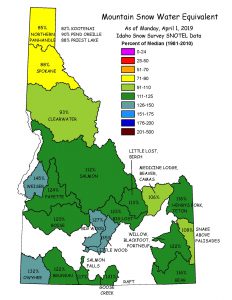The Wood River Valley Groundwater-Flow Model Project was initiated to provide a scientific foundation for the management of aquifers underlying the Wood River Valley. In 2008, the Idaho legislature approved House Bill 428 and House Bill 644 establishing the Statewide Comprehensive Aquifer Planning and Management Program (Idaho Code § 42-1779) and the Aquifer Planning and Management Fund (Idaho Code § 42-1780). This legislation authorized the Idaho Water Resource Board (IWRB) to begin comprehensive aquifer management planning (CAMP).
The Aquifer Planning and Management Program is designed to provide the IWRB and IDWR with the necessary information to develop plans for managing ground and surface water resources into the future. This phase of the program for the Wood River Valley began with the technical component of developing a groundwater-flow model.
IDWR and the United States Geological Survey (USGS) partnered to develop a groundwater-flow model of Idaho’s Wood River Valley aquifer system. The initial model development was completed in 2016, but model upgrades are forthcoming.

Purpose and Objectives
The model is constructed to simulate the effects of climate and human activities on the aquifer system with an emphasis on the interaction of the surface and groundwater system. This work incorporates the increased knowledge about the aquifer system which was developed in the past several years. USGS reports can be found on the Reference Material page. USGS staff is working with local communities and organizations to gather information and analyze the aquifer system. This increased understanding of the groundwater system, described in several technical papers published by USGS, are the base for the model development.
Groundwater-flow models are developed to represent our understanding of the aquifer system and can be used to manage and plan for the water needs and uses of the region. The Wood River Valley groundwater-flow model is designed to further the basic understanding of the aquifer system and ultimately to examine effects on the groundwater system and its interaction with the Big Wood River because of changes in water use, recharge, or discharge.
A technical advisory committee was established to provide the modeling team with input during the model construction.










